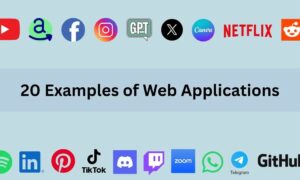Introduction
In the contemporary digital landscape, where proficiency in web development is a prized skill, the question arises: Can one truly become adept in this field without delving into the intricate world of coding? Prepare to be intrigued as we explore alternative routes to success in web development, challenging the conventional belief that coding is the sole gateway to mastery in this industry. Whether you’re a novice eager to explore uncharted territories or an experienced developer seeking innovative approaches, this article is tailored just for you.
Decoding Traditional Learning Methods
Web development has undeniably become a cornerstone skill in today’s digital age. However, the prevailing misconception is that one must possess advanced coding skills to excel in this field, often deterring individuals lacking coding experience from pursuing a career in web development.
The good news is that mastery in web development can be attained without extensive coding. This section delves into alternative paths to success, exploring ways one can learn web development without delving into traditional programming languages.
Alternative Paths to Learning Web Development
1. Website Builders:
a. Overview: User-friendly tools like Wix, Squarespace, and Weebly empower individuals with minimal coding experience to create websites effortlessly by dragging and dropping elements onto templates.
b. Advantages: accessibility for beginners, quick customization, and ease of use.
c. Limitations: constraints on customization options.
2. Content Management Systems (CMS):
a. Overview: Platforms like WordPress and Joomla provide pre-designed templates and themes, offering users the ability to customize their websites through user-friendly interfaces.
b. Advantages: flexibility without extensive coding and a wide range of features.
c. Requirements: Basic understanding of HTML and CSS for optimal utilization.
3. Visual Editors:
a. Overview: Tools like Adobe Dreamweaver or BlueGriffon enable visual website design by manipulating components on a screen, reducing the need for manual code writing.
b. Advantages: reduced coding time; visual design interface.
c. Requirements: Basic understanding of HTML and CSS.
4. Online Courses:
a. Overview: Online platforms offer courses focusing on web development without requiring extensive coding knowledge. Visual editors or simplified programming languages are often employed.
b. Advantages: structured curriculum, step-by-step learning.
c. Drawbacks: costly; may lack hands-on experience.
5. Collaboration with Developers:
a. Overview: Partnering with professional web developers allows individuals to share ideas and designs, leaving the coding to experts.
b. Advantages: Focus on creativity and ideas; professional coding expertise.
c. Consideration: Collaboration requires effective communication and project management.
Choosing the Right Path: Tips for Success
1. Identify your goals:
Choosing the right path for learning web development without coding is a pivotal decision that can significantly impact your success in the field. To ensure you make an informed choice aligned with your goals and learning preferences, consider the following provided tips:
2. Identify your goals:
Take the time to reflect on your overarching objectives for learning web development without coding. Ask yourself whether you aspire to pursue a full-time career in web development or if you’re aiming for basic skills to enhance personal projects. Clarifying your goals will serve as a guiding beacon, helping you tailor your learning path accordingly.
3. Research Learning Options:
Conduct thorough research on the various learning options available, such as online courses, bootcamps, self-study programs, or mentorships. Consider factors like the cost of the program, the time commitment required, and the type of support and resources provided. Understand the learning methodologies for each option to ensure they align with your preferred learning style.
4. Evaluate your learning style.
Recognize that everyone has a unique learning style. Some individuals thrive on hands-on, practical experiences, while others prefer a more structured classroom setting. Assess your own learning preferences and choose a path that resonates with your style. If you lean towards practical work over theory-based lessons, an online course or bootcamp might be more suitable for you.
5. Review Course Curriculum:
Delve into the specifics of the course curriculum or syllabus offered by the learning path you’re considering. Ensure that it covers all the necessary topics required to achieve your goals and is up-to-date with industry standards. Look for programs that strike a balance between foundational knowledge and practical application, providing you with a well-rounded understanding of web development.
6. Seek Recommendations:
Actively seek out recommendations from individuals who have pursued similar paths or are currently working in the web development field without extensive coding. Engage with online communities, forums, or networking events to gather insights into their experiences. Real-world testimonials can offer valuable perspectives and guide you towards reputable courses or programs that have proven success.
7. Consider support and resources:
Acknowledge that learning web development without coding can present challenges, and having adequate support is crucial. Evaluate the level of support and resources offered on your chosen path. Look for options that provide mentorship, community support, or access to additional learning materials. Having a robust support system can enhance your learning experience and contribute to your overall success.
Conclusion
While coding remains a traditional route to web development mastery, alternative paths now offer diverse opportunities for individuals with a passion for web development. From no-code website builders to collaborative projects with professional developers, these alternatives break down barriers, allowing anyone to embark on a successful journey in web development. If your lack of coding skills has held you back, explore these alternative paths and witness the doors they open on your route to becoming a thriving web developer.



































